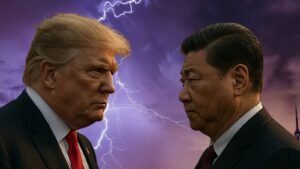California is heading to court after the White House tried to send California National Guard members to Portland, escalating a fight that has already drawn two rapid rulings from a federal judge in Oregon.
The latest order, issued late Sunday, temporarily blocks the deployment of any National Guard units to the state, not just Oregon’s own.
The ruling followed a weekend of shifting directives and competing claims about authority to federalize state forces.
U.S. District Judge Karin Immergut granted a second temporary restraining order after first blocking the administration’s attempt to use Oregon’s Guard.
The court barred deployments from other states as well and set an October 17 hearing on whether to extend the pause.
The order expires on October 19 unless extended, and it requires only a nominal bond, underscoring the court’s view that the balance of harms favors the plaintiffs. The court also declined a government request to stay the order pending further proceedings.
The filing makes clear that the legal questions go well beyond crowd control in Portland and into the limits of federal power over state military units under Title 10 and the Insurrection Act. For precision on the scope and timing, see the court’s Second Temporary Restraining Order.
California officials said they would continue to contest any cross border deployment of their Guard forces to Oregon without state consent.
The Governor’s office described the weekend decision as a court victory that prevents California personnel from being sent into Oregon under federal control.
This position is aligned with Oregon’s, where state officials argue the administration lacks grounds to override the governor’s authority in the absence of an actual insurrection or a breakdown of local law enforcement.
Oregon’s Department of Justice has also highlighted the broader implications of the second order, which temporarily forbids the use of Guard units from any state while the case proceeds.
The administration has argued that federal law permits rapid mobilization to protect federal property and personnel. It has signaled plans to appeal and has suggested it could seek other legal avenues if restraining orders remain in place.
The court’s directive has created a legal pause in which troops who had been mobilized are in a holding pattern and state leaders are racing to prepare for a mid-October hearing that could determine whether the restrictions continue.
Defense and security contractors are unlikely to see material revenue effects from a halted deployment, but policy direction matters for sentiment, particularly if lawmakers revisit authorities governing the Guard’s role in civil events.
Democratic governors in the West have framed the dispute as a test of federalism and the traditional guardrails that keep state military forces under civilian control at the state level.
The White House has framed it as a public safety issue tied to protecting federal sites. What happens in the Oregon case will inform how far Washington can go in moving Guard units across state lines without the receiving state’s consent, a boundary that has rarely been tested in recent decades.




















